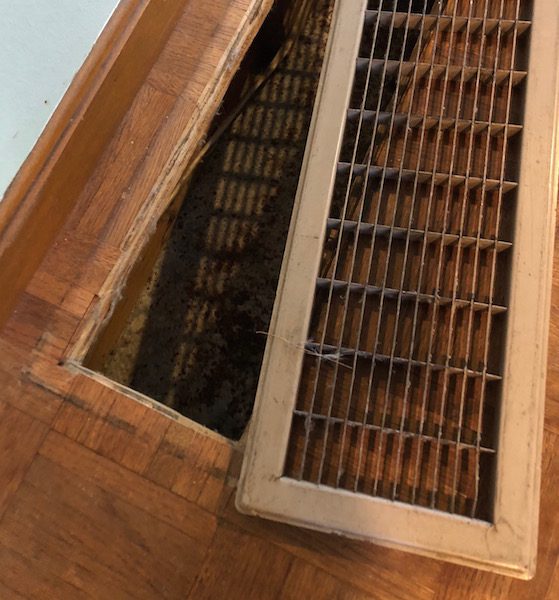Take Action if You Suspect Defective Ductwork in Your Home

It stands to reason that if you live in an older house, a lot of the systems within that house are likely to be old as well. And while you may have kept up maintenance on the house itself – its roof, gutters, yard, windows, doors, etc. – relatively unseen parts of the house may be suffering from neglect. In many older homes, this may happen with the ductwork that delivers hot or cold air to every room in the house. Yet, defective ductwork isn’t confined to older homes. Other factors can result in leaky or otherwise faulty ducts.
Any home’s HVAC system can only do its job if the network of ducts that delivers and circulates conditioned air is well-designed and free of defects and deterioration. To illustrate why this is so, it’s important to know a little more about the job that ductwork performs in a house or apartment.
The Role of Ductwork in a Home
The most common type of central heating and cooling system is forced-air. The main HVAC equipment – whether a furnace, heat pump or air conditioner – uses fuel and/or electricity to create warm or cool air. But the conditioned air doesn’t just sit there; it needs to be sent to where people can appreciate it. A powerful fan – sometimes called a blower, sometimes called an air handler – pushes the hot or cold air through a system of pipes (ducts or ductwork) to rooms in the house. The conditioned air in these “supply” ducts emerges from vents and registers in rooms, then is drawn back to the HVAC equipment via “return” vents and ducts.
When Ductwork Fails to Do Its Job…
Ductwork in a home may fail for a variety of reasons. These can include poor design and installation in the first place; deterioration or separation over time; substandard duct materials; or some inadvertent physical force (or gravity) that disconnects duct sections.
When gaps or holes occur in ducts or duct sections become separated, the obvious consequence is the escape of air. This isn’t so bad when heated or cooled air is leaking into conditioned areas. However, often duct leaks happen in unconditioned areas such as crawlspaces, basements, wall voids and garages. So that conditioned air isn’t doing anyone any good. When it doesn’t arrive at its intended destination, your HVAC system has to work harder and consume more energy to replace it.
Leaky ducts also can adversely affect indoor air quality. Dirty air in unconditioned areas such as a crawlspace or garage can infiltrate openings in defective ducts, and end up in living areas of your house. This may also create a safety hazard if toxic fumes or carbon monoxide from proximate exhaust vents backdraft into the home via faulty ductwork.
If You Can’t See the Ducts, How Do You Know?
In most homes, the vast majority of ductwork is hidden behind walls or ceilings. So how can you know your ducts are still working as they were intended?
For one thing, you can assume that if your house is more than 20 years old, and there’s no record that the ducts have ever been replaced, some deterioration may have occurred over time. While the ducts might be fine, it’s worth the cost to commission a professional duct inspection. If the inspection reveals isolated problems such as one or two disconnected ducts, you can pay to have them repaired. However, if the inspection reveals general and widespread faults in the duct system, you’ll want to consider replacing them. It’s also possible that a ductwork inspection will find that your ducts need to be cleaned, for better energy efficiency, performance and indoor air quality.
Your own visual inspection of accessible ductwork also may reveal issues such as cracks or holes. While you may be able to seal those leaks with duct mastic and/or quality metal tape, without a professional inspection, there’s no way of knowing whether the whole network of ducts has similar defects.
If you begin noticing higher than normal energy bills, that could be yet another clue that your home’s duct system is defective. Conditioned air isn’t arriving where it’s designed to go, and your HVAC system has to consume more energy to compensate. Another tip-off to duct problems is inconsistent airflow into different rooms. If you just can’t properly heat or cool a certain room or area of the house, this could signal a defective stretch of ducts that serves that area.
What You Can Do
If you suspect your home’s ductwork isn’t doing its job for any variety of reasons, contact your trusted Cincinnati HVAC contractor for help. They can inspect your ducts and help you rectify any negative issues.
